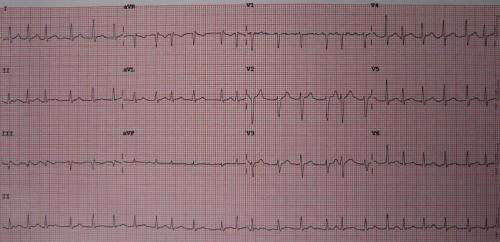
American Indian people with atrial fibrillation (AFib) had the highest risk of non-hemorrhagic stroke when compared with people in other racial and ethnic groups, and they also experienced the highest overall risk for stroke even without atrial fibrillation (AFib), according to new research published today in the Journal of the American Heart Association, an open access journal of the American Heart Association.
“In previous research, we have confirmed that American Indian individuals, when compared with those in other racial or ethnic groups, have the highest risk of atrial fibrillation, which is a quivering or irregular heartbeat that can substantially increase the risk of blood clots and stroke,” said lead study author Gregory M. Marcus, M.D., M.A.S., a cardiologist, professor of medicine and associate chief of cardiology for research at the University of California, San Francisco. “While American Indian people are known to have a particularly high risk for stroke in general, the relationship between AFib and non-hemorrhagic, or non-bleeding, stroke among this group has not been thoroughly studied.”
In this study, researchers reviewed medical records for nearly 17 million adults (ages 18 or older) who were treated in hospitals or ambulatory care settings throughout the state of California between January 1, 2005 and December 31, 2011 and followed for a median of 4.1 years. About 0.6% of the patients were of American Indian descent; 56.7% were non-Hispanic white people; 25.9% were Hispanic people; 8.7% were of Asian descent; and 8.1% were Black people. During the four years of follow-up, there were 166,826 non-hemorrhagic strokes, of which, 36,950 strokes occurred among patients with atrial fibrillation.
As a group, American Indian people experienced the highest rates of non-hemorrhagic stroke whether compared to people in all the other racial and ethnic groups in the study combined, or when compared individually to each racial and ethnic group. Among the specific findings:
- American Indian people had a 47% higher risk of non-hemorrhagic stroke when compared with all the people in all of the other racial and ethnic groups;
- American Indian people with AFib had a 38% higher risk of stroke when compared with people in the other population groups who also had AFib;
- Atrial fibrillation alone could not explain the elevated risk: American Indian adults without AFib had a 59% higher risk of stroke compared with adults in the other racial and ethnic groups without AFib; and
- Overall, American Indian adults had higher rates of Type 2 diabetes, obesity and smoking, which are known risk factors for stroke. American Indian people also had lower rates of health insurance coverage and lower income levels.
“The results of our study add to the growing body of evidence that race and ethnicity are important factors when assessing stroke risk,” Marcus said. “However, our findings that conventional risk factors such as AFib may not be the cause for this increased risk among American Indian individuals, suggest other influences are in play. These could possibly be related to hereditary factors, environmental exposures or disparities in access to healthcare, and this clearly warrants further attention.”
The study’s findings are observational, and while a large group of adults were analyzed, only people receiving treatment in California were included in the analysis. Marcus said the next step is to expand on these findings, such as conducting randomized trials among American Indian populations, to determine the most effective ways to save lives.
“American Indian people experience the highest rates of stroke in our society. Together, regular preventive care that includes routine screening and treatment for hypertension and Type 2 diabetes, along with regular follow-up that may detect other conditions such as atrial fibrillation, accompanied by guideline-directed care could help mitigate this heightened risk for stroke, which is largely preventable,” Marcus said. “And, then there remains the challenge of determining optimal methods to actually implement these strategies in the real world that can improve people’s health and lives.”
Source: Read Full Article
